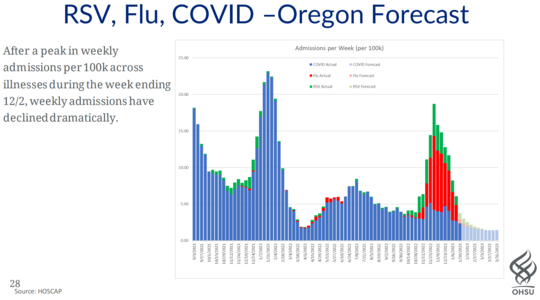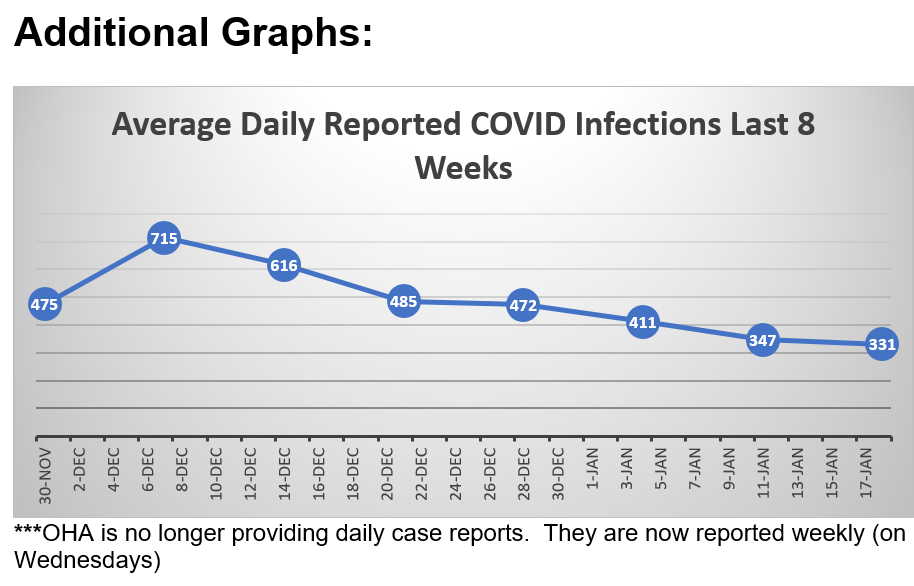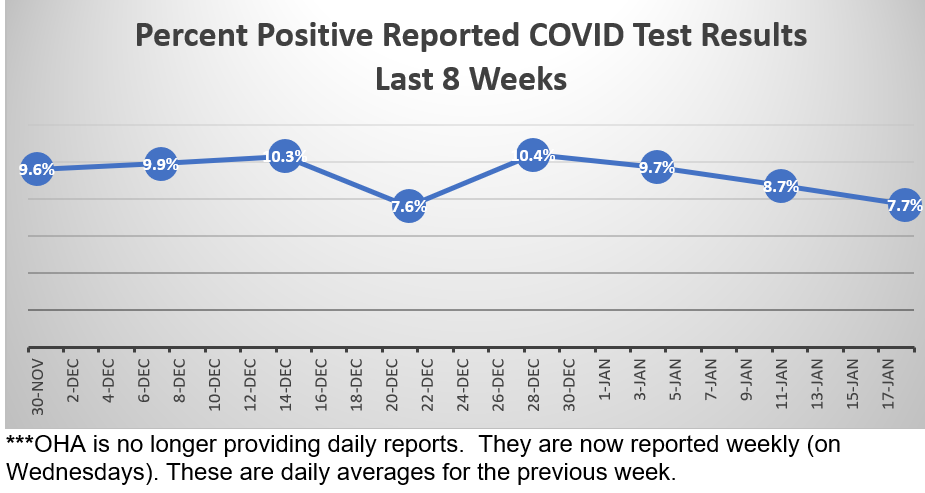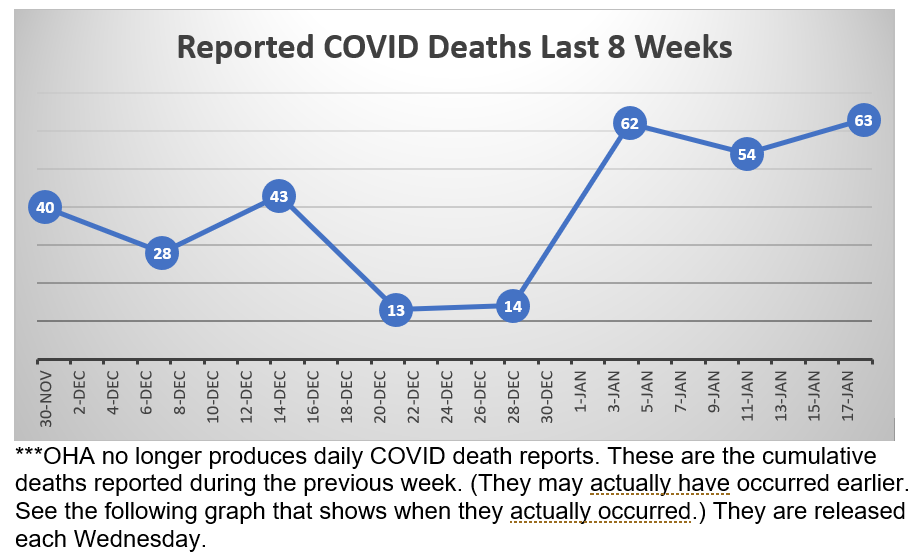|
January 21, 2023
Dear Neighbors and Friends,
I hope that you and your loved ones are doing well, staying healthy, and looking out for your neighbors and friends during this past week.
We legislators made it through our first regular week of session. Senate floor sessions were very short and sweet this week, as it will be at least a couple of weeks before we start voting bills out of committee and sending them to the floor for debate and votes. It was great to have audiences and in-person testimony again in our committees, but also great that we were also able to receive testimony remotely. I’m happy to report that in my committees it went without a hitch.
In this week’s newsletter I’ve included a few more resources that I hope will help you navigate the legislative system.
I had a change in assignment this week, which you can read about below. It had looked as if I wouldn’t have any committees in the Environment/Climate/Natural Resources realm this session. As you’ll see, that has definitely changed.
You’ll also find another reminder about Monday evening’s zoom Town Hall. It’s not too late to sign up. Check it out below.
On the COVID front, I’m happy to say that the news continues to be positive overall here in Oregon. As you’ll see in the updates, graphs, and links, we’re continuing to see declines in all the COVID metrics, as well as in those related to Flu and RSV. All but one of our 36 counties are at Low Risk right now (unlike in many other parts of the country), and the one exception—Malheur in far Southeast Oregon—has moved from High Risk back to Medium Risk.
There’s a new forecast report out from OHSU, which shows that the strain on our hospitals from respiratory illnesses is lessening. They are predicting that the situation will continue to improve, as long as we remain relatively free of the XBB.1.5 subvariant here in Oregon. If it does arrive in force (as we’re seeing in other parts of the country), we can expect another surge, which will bring increased cases and more hospitalizations. Still, they predict that even under this alternate scenario, it will be a smaller surge than what we were seeing a month ago. We shall see.
Until next week, please do your best to stay happy, healthy and safe. And let me know if you have any questions or thoughts about anything in this week’s newsletter.
COMING MONDAY: Joint Town Hall
Now that session is underway, it’s time for the three SD 23 legislators to meet with constituents in our first town hall of the session. It will be on Monday evening, January 23rd, 5:30-6:30 p.m.
Reps Khanh Pham and Thuy Tran and I will go over our committee assignment and priority bills, and will provide our sense of how things are looking from the perspective of the House and the Senate. We’ll also try to answer as many of your questions as we can.
You can register online here. Please share your questions in advance when you register.
Looking forward to hearing what’s on your mind and discussing opportunities and priorities for our community in 2023.
I hope you can join us on Monday!

New Committee Assignment for Me
As I predicted in last week’s newsletter, we’ve seen several changes made to committee assignments. One of those changes affects me.
The Senate President had to make a change in who would be serving as Co-Chair of the Joint Ways and Means (i.e., the budget committee) subcommittee on Natural Resources. I was asked to take on this additional “gavel” and have agreed to do so.
The Ways and Means subcommittees have two co-chairs, one from the Senate and one from the House. Interestingly, the House Co-Chair for the Natural Resources subcommittee is none other than Rep Khanh Pham from HD 46, my SD23 teammate.
Our committee will be overseeing the fates of policy bills related to energy, natural resources, environment, and climate, all areas where I have a lot of background from my years chairing the Environment and Natural Resources policy committee and time served as a member of this subcommittee. It brought me into contact with all the agencies that this subcommittee oversees.
We have responsibility over the following agencies:
- Columbia River Gorge Commission (CRGC)
- Land Use Board of Appeals (LUBA)
- Department of Geology and Minerals Industries (DOGAMI)
- Land Conservation and Development (LCDC)
- Oregon Marine Board (OMB)
- Department of State Lands (DSL)
- Oregon Department of Energy (ODOE)
- Oregon Department of Agriculture (ODA)
- Water Resources Department (WRD)
- Oregon Parks and Recreation Department (OPRD)
- Oregon Department of Fish and Wildlife (ODFW)
- Oregon Department of Forestry (ODF)
- Department of Environmental Quality (DEQ)
It will be an interesting and challenging assignment, particularly in this tight budget year. But I’m looking forward to getting back to working in this subject area.
On the downside, it meant that I had to give up my seat on the seven-member Judiciary Committee, an assignment that I’ve had for several sessions and one that I really value. However, I’ll continue to stay engaged with the committee’s work, especially as it relates to justice/prison reform and improved reentry for the formerly incarcerated, where I have several important bills this session. With my departure, Judiciary was reduced to a five-member committee.
Returning to Ways and Means for a moment, here’s the orientation document that we’ll be going over during the subcommittee’s initial meeting on Monday afternoon. (All subcommittees meet four days a week.) It not only is a good introduction to the work of this subcommittee, but it tells you everything you ever wanted to know about the Ways and Means Committee and the budget process in general.
More Useful Resources for the Session
I mentioned in last week’s newsletter some of the ways that you can sign up to testify on a bill, either in person or remotely. Well, it’s gotten even easier to do so through the Oregon Legislative Information System (olis.oregonlegislature.gov). Once a committee agenda has been posted with the bill you’re interested in (click on Committees, go to the committee you want, and choose the day you want), you’ll find a link right next to the bill that is up for a public hearing. Click on that, and you’ll be taken straight to the sign-up page for that bill.
Another good thing to know is that you can closely follow the work of any committee you’re interested in by going to that committee’s page and clicking on e-subscribe on the upper right-hand corner of the page. You’ll then be subscribed to receive notice every time a new agenda is posted.
You can do the same thing with individual bills that interest you. Go to the webpage for that bill, click on e-subscribe in the upper right-hand corner of the page, and you’ll receive notice whenever that bill is scheduled for a public hearing or a vote.
Finally, let me direct you to a new publication from the House Majority Office: the Legislative Session Participation Guide. It includes a bunch of useful information and links.
Senate Democrats Release Our OREGON WORKS Session Agenda
One of the hallmarks of a new session is the release of the session priorities for each legislative caucus (Senate Democrats, Senate Republicans, House Democrats, House Republicans). Each caucus usually creates a document laying out its high-level “agenda” for the session. Last Tuesday my caucus, the Senate Democrats laid out our agenda, which we’re calling the "Oregon Works" agenda, in a press conference with a group of print, radio, and TV reporters. Most of our policy committee chairs were there to give a three-minute overview of what’s on the agenda for their issue area. I was there to speak to Education priorities. If you’re interested, you can watch the 40-minute press conference here.
Here’s session agenda for the House Democratic Caucus. which was also released last week.
Here’s the agenda for the House Republicans.
The Senate Republics will be releasing their detailed priorities next week. Here are the top-line priorities for the Senate Republicans.
Check them all out, and you’ll get a sense of the areas of agreement and disagreement, as well as the rhetoric that each side is using. It’s a little preview of what we can expect over the coming months.
ON THE COVID FRONT
Weekly Data Report:
OHA now updates and reports COVID metrics once a week, on Wednesdays. Here are the most recent set of weekly results, for this past week from 1/5//23 through 1/11/23.
As you’ll see, this week’s report shows declines in all of the metrics except for deaths (but there the increase is due to late reporting).
- The 7-day average for newly reported infections went down again last week, from 347 the previous week to 331 reported infections per day this last week. The number of new cases is again likely an undercount, as many people are using home tests to determine their infection status but are not reporting those results.
- Average test positivity went down another percentage point during the last week, to 7.7% vs. the previous week’s 8.7%. Again, this number skews high because it likely reflects a higher proportion of people showing COVID symptoms (and thus reporting or going in for a test, rather than self-testing and never reporting).
- On Wednesday there were 239 COVID-19-related hospitalizations statewide, another decrease from 261 the previous Wednesday and more than 100 fewer than the week before that. Hospitalizations are now our best indicator of disease spread. Again, however, most of these hospitalizations are not in and of themselves due to COVID—most are those who tested positive after having been admitted for other reasons.
- The number of COVID patients in Oregon’s ICUs on Wednesday also was a another decrease from the previous week, from 36 to 33. These are the most serious COVID infections.
- There were 63 COVID-19-related deaths reported during the last week, a sad increase from the previous week’s 54. However, it’s important to remember that many of every week’s reported deaths actually occurred in earlier weeks but were just reported to the state, and others that likely occurred have yet to be reported. The newsletter’s final graph shows when the deaths actually occurred, and you’ll see that the number of COVID deaths each day continues to remain relatively low.
Weekly County Report: All Oregon Counties (except one) Now at Low Risk; Metro Region Continues to See Lower Positivity Rates Overall
The CDC assigns risk levels based on a combination of the number of new COVID cases and the number of people in hospital for COVID.
According to the CDC Daily Counter (updated each Thursday), all but one Oregon counties are at either Low or Medium Risk. One county—Malheur in far southeast Oregon—is at Medium Risk, and the remaining 35 are at Low Risk. As you’ll see below, wastewater analyses for Ontario (the largest city in Malheur County) have been showing sustained increases in COVID virus levels for the last few weeks.
The five Oregon counties that had been identified as Medium Risk last week are now at Low Risk.
We can also track the cases, deaths, and test positivity rates for each county at this website.
Positivity rates for the three Portland-area counties were mixed, but overall went down last week. Clackamas County in now at 8.5% (up very slightly from 8.3% the previous week). Washington County has dropped a full percentage point to 8.4% (down from 9.4%). Multnomah County remains the same as last week, a relatively low 6.5%.
Remember that these are all based on reported test results, and so are more likely to be a little higher than the total percent positivity (i.e., if one were to include all tests taken).
 
This Week’s Wastewater Monitoring Report: Roughly the Same
With testing reports giving us just a fraction of infections out there, wastewater monitoring has become a more reliable indicator of the amount of virus in cities around the state. That report is updated each week.
This week’s report, updated on Wednesday, again shows more cities with declining rates than increasing rates, but less so than last week. As you’ll see, 10% of the cities observed showed decreases or sustained decreases last week (way down from 23% the previous week). Nine percent again showed an increase or a sustained increase (same as the previous week). Eighty-one percent showed no change (up from 68%).
Gold Beach and Sunriver (again) are the cities showing sustained increases in last week’s report.
OHSU Report Continues to Show Declines in COVID, Flu, and RSV
Another OHSU forecast report forecast report, released on Friday. It is now being called the “OHSU Oregon Hospital Forecast and Trends: COVID, Flu, RSV.”
It uses data provided by OHA and others that project how fast the viruses may spread in the population and provides projections on possible outcomes, including infection rates and impacts on hospital capacity. The lead author is Dr. Peter Graven, Director of OHSU’s Office of Advanced Analytics.
This week’s report reflects an ongoing reduction in all the metrics last week, which you can see elsewhere in this newsletter. As predicted, we’re now seeing declines in all three respiratory ailments. The December COVID/Flu/RSV surge is abating, and we’re returning to pre-surge numbers in most metrics. The strain on hospitals appears to be lessening as well, though it’s still significant.
Here’s a press release on the report from OHSU.
Here are some details:
- More hospital beds are available in Oregon and fewer people are waiting in emergency rooms for beds. The level of hospitalizations has dropped by 35% since the peak on Nov. 29. They are now at pre-surge levels.
- Fewer people in Oregon are entering the hospital with flu, RSV, and COVID-19.
- The rate of people going to Oregon emergency rooms for COVID has declined to 2.2%.
- Boarding (patients having to remain in the emergency department due to lack of staffed regular hospital beds) is back to pre-surge levels.
- Four children are in Oregon hospitals for COVID, way down from the previous report’s nine.
- Five percent of the people in intensive care in Oregon have COVID.
- Still, many Oregon hospitals still have limited space for people who need certain types of care.
- The amount of COVID-19 in wastewater samples is dropping throughout the U.S. and in Oregon.
- The percentage of positive COVID tests in Oregon is down a little to 8.6%.
- However, overall reported testing is at its lowest level since May of 2020.
- The COVID-19 variant XBB.1.5 has not spread significantly in Oregon. XBB1.5 has continued to spread in the Northeast, where it is the dominant variant, but has not spread as consistently in Oregon. The primary forecast is based on the likelihood that XBB.1.5 will not spread persistently in Oregon.
- The alternative forecast shows what happens if XBB.1.5 grows at the rate seen in the Northeast, peaking at 286 people with the variant in Oregon hospitals on March 15.
- RSV and flu are expected to continue to decline.
- The number of deaths is expected to remain low.

COVID Q & A from OHA (from OHA weekly newsletter)
Dr. Andrea Lara, MD, MPH, OHA health advisor, and Elizabeth Stelle, COVID-19 Lab Supply and Capacity Coordinator, answered today’s questions.
Q: My husband takes Xarelto due to prior DVTs (deep vein thrombosis). I had read that he can’t take Paxlovid while on this drug but when I looked recently, I didn’t see it listed. Can you please clarify if this treatment is available to him if he gets COVID-19. If not, what are his options and how effective are they compared to Paxlovid? – Mabel, Bend
A: “Thank you for your question, Mabel. The National Institutes of Health's (NIH) created COVID-19 treatment recommendations based on multiple factors, including effectiveness. The preferred recommendation for treating COVID-19 illness starts with Paxlovid (an oral antiviral pill taken for five consecutive days). If Paxlovid is not an option because, for example, it conflicts with other medications the patient is taking, the next COVID-19 treatment medication NIH recommends is remdesivir (an injection administered like a vaccine for three consecutive days). If both of those treatments are not medically appropriate, the next preferred option is Lagevrio (molnupiravir), another oral antiviral pill taken for five consecutive days.
“Regarding your question about Xarelto (rivaroxaban), conflicts with other medications can sometimes limit someone’s options for COVID-19 treatment. We recommend your husband speak to his health care provider about all the medications he takes as they relate to COVID-19 treatments, to best prepare himself if he becomes infected with COVID-19. You can also use this drug interaction checker from the University of Liverpool, as well as this Paxlovid eligibility checklist from Pfizer.”
Q: I just reordered the COVID-19 rapid test through the U.S. Postal Service and I received two test kits that say “use by 07-20-2022.” Are they still effective? How do I order test kits that are not expired? – Rhonda, Portland
A: “There are many brands of COVID-19 self-tests on the market, and many of them have received extensions to their ‘use by’ or expiration dates. One of the most common brands that the federal government has distributed through the postal service is the iHealth COVID-19 Antigen Rapid Test. These test kits have had multiple extensions, so it can be difficult to track. Fortunately, the manufacturer’s website has a tool to find the updated expiration date of your test kit. Enter the lot number printed on your test kit box, and the tool will show you the current expiration date.
“For information on expiration date extensions of other brands of rapid antigen self-test kits, please visit this FDA website that lists all available test kit brands and expiration information.
“If your test kit has received an extension and the new expiration date has not passed, the test kit is still considered effective. To contact the federal program distributing these test kits, please call 1-800-232-0233 (TTY 1-888-720-7489).”

Additional COVID Updates and Links








Here again are some COVID resources that you will find useful:
If the above links are not providing you with answers to your questions or directing you to the help that you need, please consider me and my office to be a resource. We’ll do our best to assist you or steer you in the right direction.
Want to See Past Newsletters?
If there was COVID-related information in a past newsletter that you want to go back to, but find you’ve deleted it, you can always go to my legislative website (senatordembrow.com), click on “News and Information,” and you’ll find them all there. Also, if someone forwarded you this newsletter and you’d like to get it directly, you can sign up for it there.
Best,
 Senator Michael Dembrow
District 23
email: Sen.MichaelDembrow@oregonlegislature.gov
web: www.senatordembrow.com
phone: 503-986-1723
mail: 900 Court St NE, S-407, Salem, OR, 97301
|